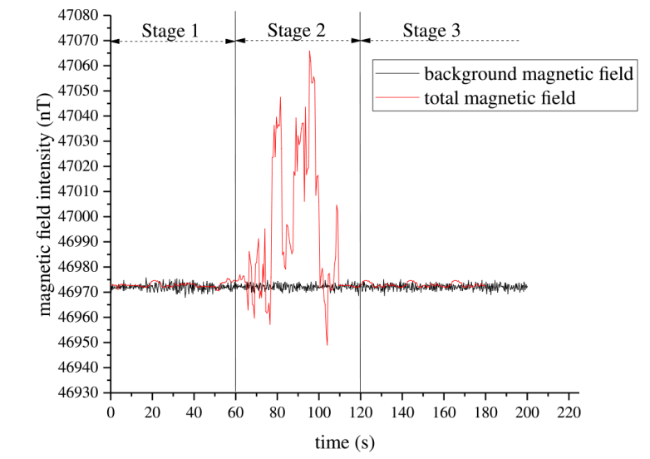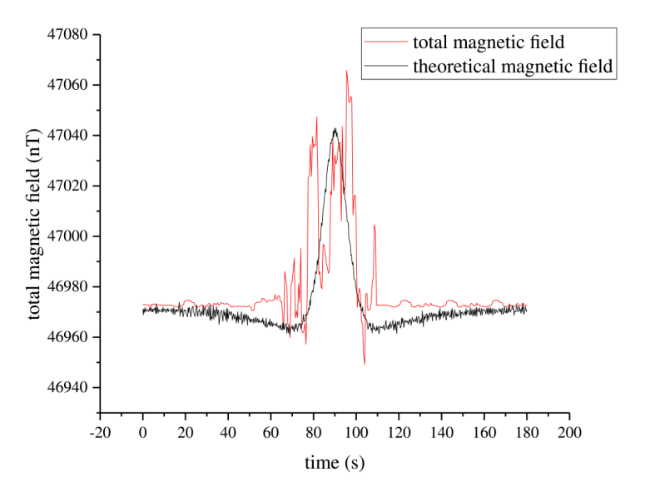As a typically weak magnetic anomaly target underwater, the magnetic anomaly in submarine pipelines can only be detected within a certain distance. Nowadays, a towfish [
33,
9] and an autonomous underwater vehicle (AUV) [
5,
23] are mainly applied as detection platforms equipped with magnetometers. A towfish is a towed detection platform, which is generally far away from the mother ship. It is greatly affected by waves and currents, has poor stability, is difficult to sail at constant altitude, and easily collides with seabed obstacles, thus resulting in damage and loss of magnetometers. Meanwhile, the AUV is an autonomous underwater detection platform. Its real-time detection is relatively poor, and it has difficulty providing an accurate location; hence, its poor performance has a certain impact on the target location, inversion, and recognition based on the magnetic field. A two-part towed platform can solve the problems of these detection platforms. A deep-sea towed platform has a wide range of applications in marine environment exploration, seabed mapping, and submarine pipeline detection. Generally, a deep-sea towed platform is divided into a one-part towed platform [
2,
24,
25,
29] and a two-part towed platform [
18]. Given that the two-part towed platform could effectively reduce the interference of the mother ship motion on the towed vehicle and has a certain heaving compensation function, an increasing number of scholars have focused on the research on the two-part towed platform. Wu and Chwang [
20], [
21], [
22] established a mathematical model of the two-part towed platform by using the finite difference method. On the basis of this model, a simulation and an experimental verification of the motion state of the secondary towed vehicle were carried out. In addition, Lalu [
10,
11] established a mathematical model of a towed cable using the lumped mass method; combined with the CFD method, the influence of hydrodynamic coefficients on the motion state of a secondary towed vehicle was analyzed. However, none of the above scholars studied the active control of the secondary towed vehicle. Schuch [
16,
17] and Linklater [
13] established the “spring-damping” model of the towed platform and examined the active control of the secondary towed vehicle. However, constant altitude sailing did not draw special attention. In short, the current two-part towed platform lacks the constant altitude sailing ability, which directly influences the detection effect of high-precision magnetic detection equipment. Therefore, the magnetic detection of submarine pipelines needs a platform that can sail at constant altitude on the seabed. Moreover, it must be equipped with magnetometers to approach the target.




















